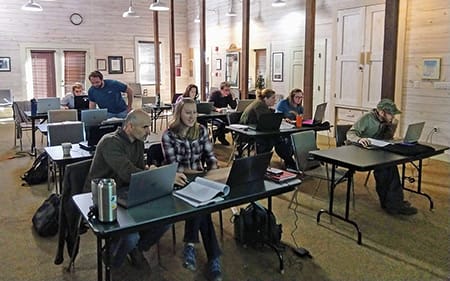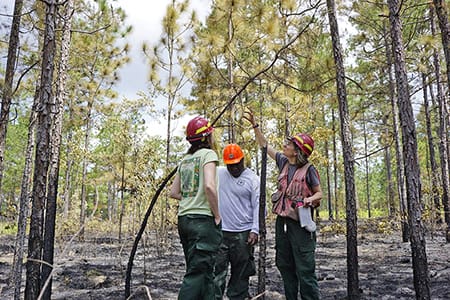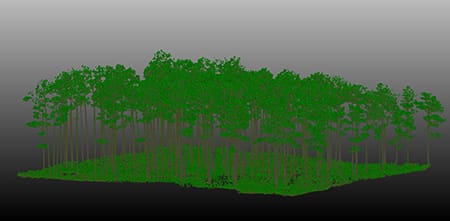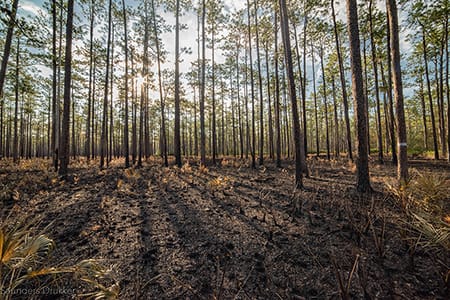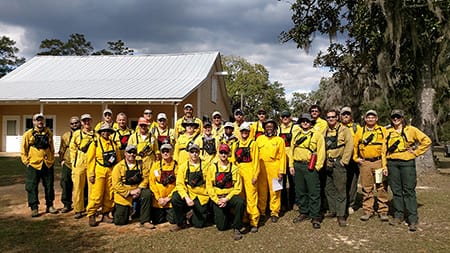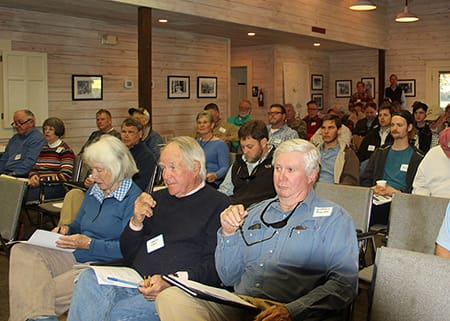Above: Emma Zeitler igniting a prescribed fire at the Season of Fire Plots at Tall Timbers.
A recent publication sharing research from the Tall Timbers Season of Fire Plots gives insight into how different resprouting hardwood species respond to season of fire.
Graduate student Emma Zeitler, co-advised by Marcus Lashley Ph.D. at the University of Florida and Kevin Robertson Ph.D. at Tall Timbers, conducted the multi-year study. We wanted to learn how the resprouting growth of four common hardwoods in pinelands of our region differed from one fire-free interval to the next when burned in each of the four seasons of the year, specifically in March, June, October, and January.
One goal was to compare two species (mockernut hickory and post oak) that historically were part of the shortleaf pine natural community on Tall Timbers to two species (sweetgum and water oak) that historically were in low areas and have invaded areas with some soil disturbance.
The key results are shown in Figure 1. They show relative growth rate of biomass from the end of one 1-year fire-free interval to the end of the next 1-year fire-free interval, where burning was done annually during this experiment.
 So, some values are negative, showing that the hardwood resprouts came back smaller than they were before, and some are positive, showing
So, some values are negative, showing that the hardwood resprouts came back smaller than they were before, and some are positive, showing
that the resprouts came back larger. Following spring and summer burns, most of the hardwoods came back smaller.
Mesophytes as a group, and sweetgum in particular, were most strongly reduced by the summer burns. The pyrophytes, mockernut hickory and post oak, came back larger following fall and winter burns. The mesophytes, sweetgum and especially water oak, came back larger following winter burns.
These patterns may correspond to patterns of energy storage. Perhaps more starch and sugars are committed to aboveground growth in the spring and summer growing season, leaving less in the roots for resprouting. In the fall and winter it seems that most of the root storage has been
replenished, providing more energy for resprouting when burned at those times.
More research needs to be done to confirm these ideas.
Some management applications are that spring and summer burns seem to be the most effective overall at reducing the size of hardwood resprouts. The fall burns do not appear particularly effective at reducing hardwood resprout size overall, although they may shift the dominance from more sweetgum and water oak to more hickory and post oak. Winter burning appears to increase hardwood resprout biomass across the board.
Future research at the Season of Fire Plots seeks to learn in which season prescribed burns do the most to reduce hardwood density (individual resprouting crowns per acre), which species are most affected by season of fire, and how season of fire affects species composition of the woody plant community.








